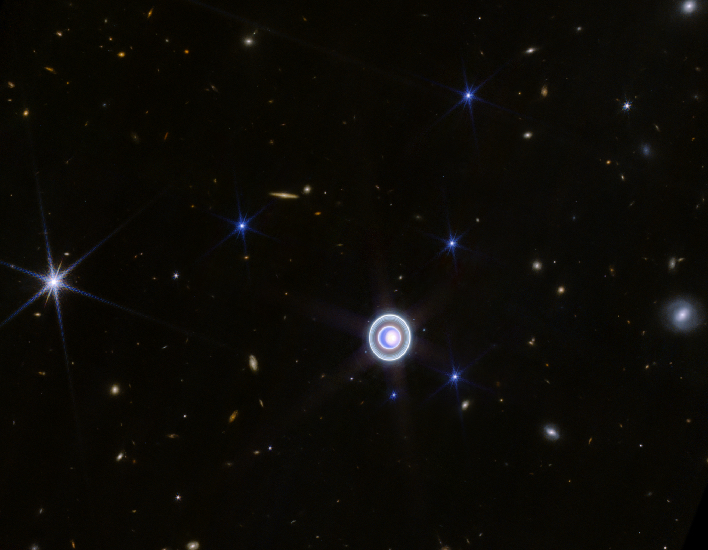NASA’s Webb Telescope Captures A Spectacular Image Of Storms Brewing On Uranus
In case you're curious, Uranus was almost called by a different name—astronomer William Herschel unsuccessfully tried to name the planet Georgium Sidus, after English King George III. Instead, the planet eventually got named after the Greek god of the sky, who was also the father of Kronos.

Along with the polar cap, JWST also unveiled several bright storms visible near and below the southern border of the polar cap. NASA says that the reason the number of these storms is visible might be because of a combination of seasonal and meteorological effects. Because Uranus appears to spin on its side, it also has some of what NASA calls “the most extreme season in the solar system.”
The latest image used Webb’s Near-Infrared Camera (NIRCam) to showcase the planet and its rings in greater clarity. The icy giant has a relatively quick rotation. One day is about 17 hours. NASA says that the quick rotation “makes it supremely difficult” for observatories such as Webb to capture one image of the entire planet. Therefore, the latest image combines several longer and shorter exposures to correct for the slight changes that occur throughout the observation.
As Webb continues to amaze with its ability to image Uranus in such exquisite detail, astronomers and scientists will use all the data collected for studying the nearly 2,000 similarly sized exoplanets detected in the last few decades.

